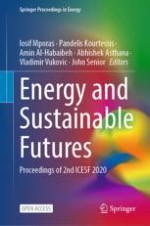
Open Access 2021 | OriginalPaper | Buchkapitel
23. Distributed Activation Energy Model for Thermal Decomposition of Polypropylene Waste
verfasst von : S. Kartik, Hemant K. Balsora, Abhishek Sharma, Anand G. Chakinala, Abhishek Asthana, Mukesh Goel, Jyeshtharaj B. Joshi
Erschienen in: Energy and Sustainable Futures
Aktivieren Sie unsere intelligente Suche, um passende Fachinhalte oder Patente zu finden.
Wählen Sie Textabschnitte aus um mit Künstlicher Intelligenz passenden Patente zu finden. powered by
Markieren Sie Textabschnitte, um KI-gestützt weitere passende Inhalte zu finden. powered by